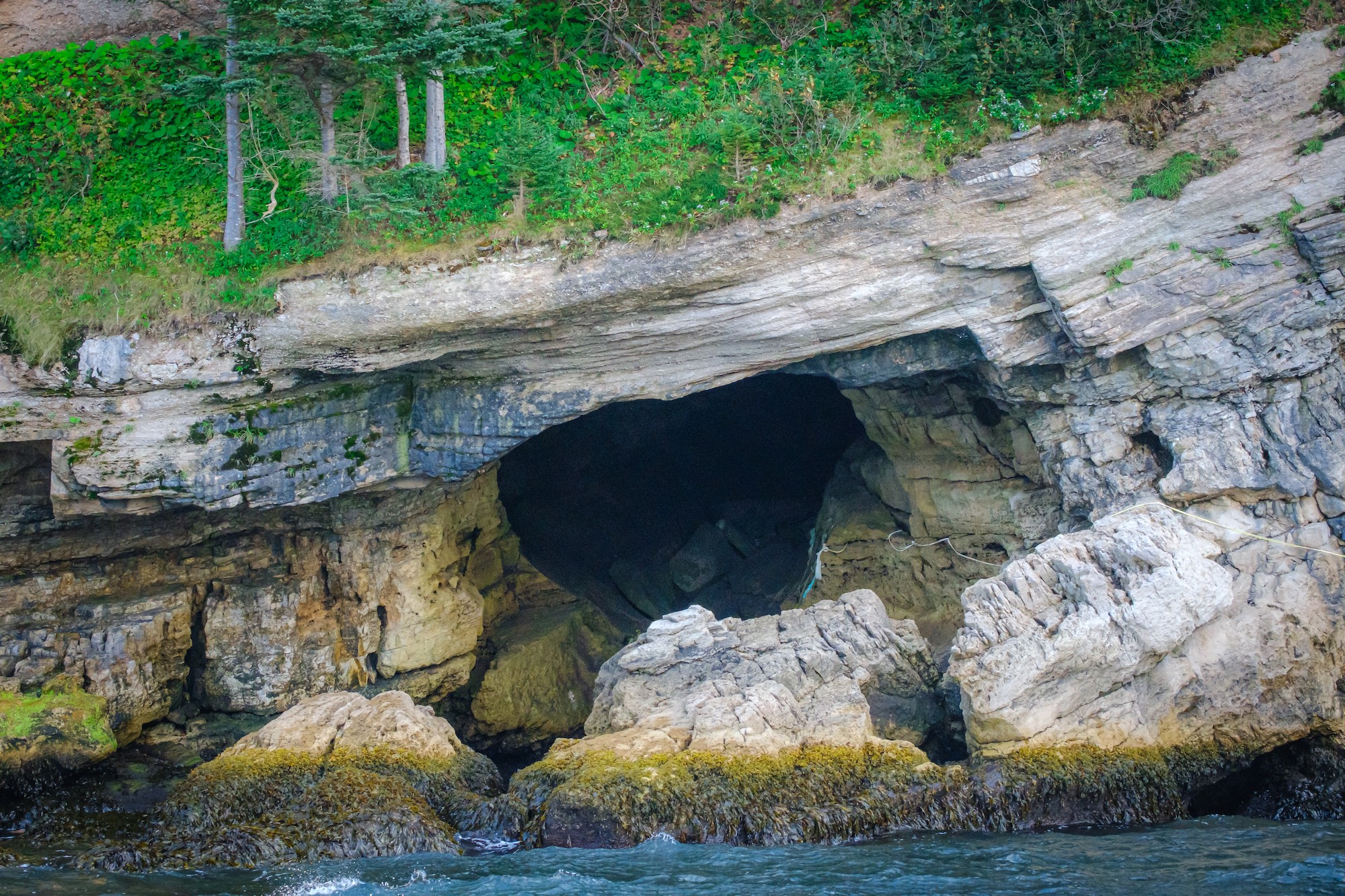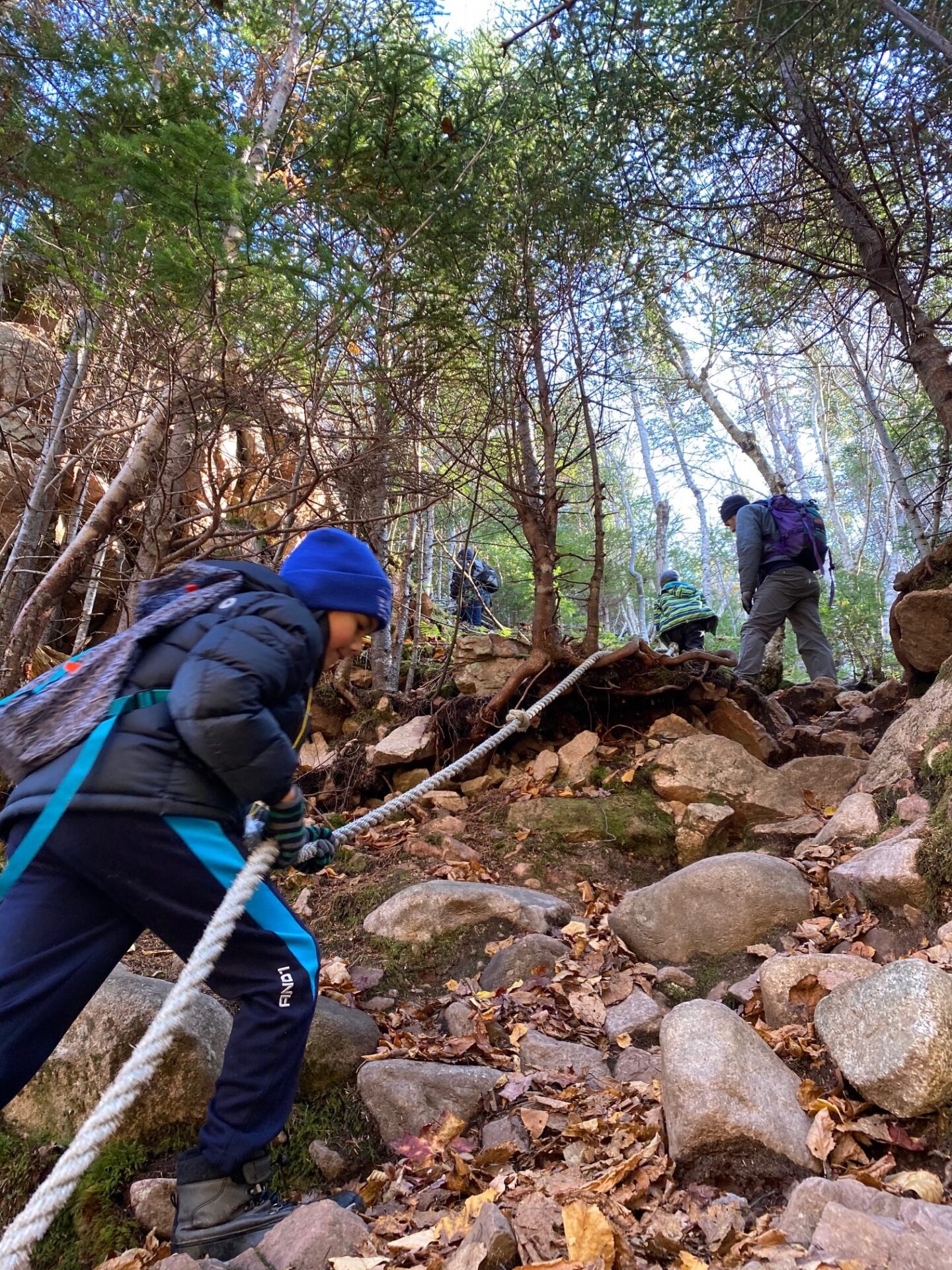Pjilita’q to the centre of the universe

caption
The entrance to Kluskap’s Cave.For Mi'kmaq, Kluskap’s Cave holds a sacred story
The hike is no easy feat, but to Clifford Paul, reaching Kluskap’s Cave makes it all worthwhile.
“It’s a sacred place and some people don’t honour the sacredness of it because they don’t know it,” he tells a group of visitors.
Paul is with the Unama’ki Institute of Natural Resources (UINR). The organization oversees a conservation plan to protect the cave and the surrounding area.
The cave is located on the north coast of Unama’ki, in Cape Breton’s Victoria County. It’s an important site for Mi’kmaq because it’s where Kluskap left the human world for the spirit world. Kluskap, the first creature, would disguise himself and interact with Mi’kmaq to teach lessons about morals and values.

caption
Clifford Paul shares the story of Kluskap.The hike to the cave is a journey in itself. It involves winding through the forest, then scaling down to a small beach, using tree roots and branches to guide the way down.
Paul stops along the way, describing the significance of the area. He says to Mi’kmaq, the cave is the centre of the universe.
“This Indigenous culturally protected area, this beautiful landscape we’re taking you to, you’re going to understand why it deserves the protection that we bring to it,” he says.
The area is part of an Indigenous Protected and Conserved Area (IPCA). These plans are led by and managed by Indigenous Peoples, and this IPCA was developed by Mi’kmaq.
“It really depends on the community and what they see as an IPCA,” says Patricia Nash, program manager at UINR. “The Mi’kmaq in Unama’ki identified Kluskap’s Cave as the priority because it is a very sacred area.”
One of the guiding principles of UINR is the concept of Etuaptmumk (Two-Eyed Seeing), developed by one of its advisers, Elder Albert Marshall. Etuaptmumk ensures that both traditional Mi’kmaw views and conventional western techniques are reflected in IPCAs.
“In the past there has been a struggle for First Nations to have a voice at the table,” says Lisa Young, executive director at UINR. “So if you want to be a partner in something like an IPCA and you’re coming from a non-Indigenous western perspective, you have to come in with an equal footing and open perspective.”
As Clifford Paul sits at the shore near Kluskap’s Cave, he reminds visitors of the possibilities it represents for IPCAs across the country. These Indigenous-led conservation areas are one way to help Mi’kmaq, especially youth, reconnect with the land where generations stood before them.

caption
Youth hike to Kluskap’s Cave.“The Elders are telling me the youth are divorced from nature. There is too much learning within the walls of a classroom,” Paul says.
“So these IPCAs are perfect for them to be in these areas, to help them build their repertoire of traditional knowledge, to help them learn the stories and retell the stories, which is just as important.”
Elders Sutik and Joe Googoo agree that education is important.
“I would like schools to be a bit more involved with this and the teachings around it,” says Joe.
Sutik wants to keep the area free of broken glass, litter and graffiti. “I would like to have it more safe. Safety is No. 1,” she says.

caption
Elders Sutik and Joe Googoo hope future generations continue to hold traditional ceremonies here.The Elders hope future generations will continue to hold traditional ceremonies at Kluskap’s Cave.
The Unama’ki Institute of Natural Resources purchased 50 acres at the beginning of the trailhead to the cave. This includes a 150-year-old house that UINR hopes to turn into an interpretive centre.
“I’m from this land,” Paul says. “It’s my own and I would do anything I can to prevent this place from being destroyed. My people would never let this place be destroyed. We stand up. We protect and we want to keep it that way.”
About the author
Haeley Cook DiRisio
Haeley Cook DiRisio is a journalist for CKDU radio. She is a recent graduate from The University of King's College Master of Journalism program....


D
Devin